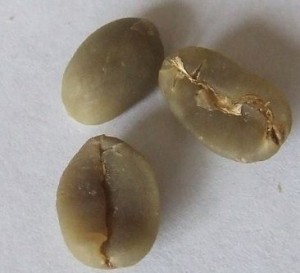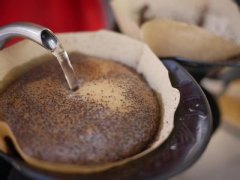Indonesia GAYO Mantenin Coffee introduction
Origin description: the northwestern tip of Sumatra Island, the "GAYO Mountains" Gayo mountain Lake Tawar essence producing area, belongs to Tibika variety of trees.
Taste introduction: GAYO Organic Coffee specially selected old species planted in Arabica in the north of Sumatra, full-bodied and charming, the overall flavor is clean, less of the general Mantenin's turbid flavor, Body's greasy feeling is very rich, fruit sweet taste is obvious, the aftertaste of brown sugar and caramel sweetness lasts for a long time, with sweet licorice aroma, peach-like fruit flavor. It is cleaner and refreshing than Mantenin, with fruity aromas and clear herbs.
Recommended reason: GAYO Organic Coffee's organic coffee has a sticky texture, buried in a complex flavor, a strong aroma of flowers or wild mushrooms, and a sweet finish that goes deep into the throat for three days. Can be said to be Sumatra's organic Mantenin coffee beans are very mysterious and wonderful, taste mellow, blooming more diverse expressions and rich appearance, is a rare escape, its charming sugar sweet and long back to sweet, very fascinating.
Country: Indonesia Indonesia
Producing area: Aceh / GAYO Mountain, Sumatra / Aceh
Manor: GAYO Organic Coffee Manor
Variety: Mandheling, Arabica
Planting altitude: about 5000 feet above sea level
Shade planting: there are shade tree species in the coffee garden, such as orange tree, avocado tree, banana tree, papaya tree, jackfruit tree and several local flowers and herbs.
Harvest time: December, January and February of each year
Appearance of raw beans: emerald green
Grade: 18, 19 mesh plus
Average annual temperature: 25 C (daily temperature difference is about 10 C)
Annual rainfall: 2700 mm, porous seepage geology of volcanic ash
Treatment: washing
Baking method: urban baking Medium Roastor City Roast (M +)
Suitable for brewing: general trickling pot, siphon pot, hand flushing pot, French pressure

Important Notice :
前街咖啡 FrontStreet Coffee has moved to new addredd:
FrontStreet Coffee Address: 315,Donghua East Road,GuangZhou
Tel:020 38364473
- Prev

Coffee Common sense Latin American (Latin America) Coffee and roasting
In 1721, French naval officer Gabriel Mathieu de Clieu went through difficulties and obstacles to bring the first coffee sapling from Africa to the Latin American island of Martinique, which was the origin of coffee cultivation in Latin America. Because France was under the Bourbon dynasty at that time, there was another time for Arabica coffee grown in Latin America.
- Next

Boutique coffee beans blue mountains Geisha rosy summer
It begins with a passage from teacher Han Huaizong's "Fine Coffee Studies": coffee varieties from Ethiopia and Yemen in the old world were transplanted to the Central and South American promised land in the new world, and took root, giving rise to many new varieties of mixed-race domestication. Among them, the most legendary color, the most beautiful taste spectrum, the cup test competition in the world won the most awards, the highest price, when the Panamanian green top pointed body Geisha; 2004
Related
- Detailed explanation of Jadeite planting Land in Panamanian Jadeite Manor introduction to the grading system of Jadeite competitive bidding, Red bid, Green bid and Rose Summer
- Story of Coffee planting in Brenka region of Costa Rica Stonehenge Manor anaerobic heavy honey treatment of flavor mouth
- What's on the barrel of Blue Mountain Coffee beans?
- Can American coffee also pull flowers? How to use hot American style to pull out a good-looking pattern?
- Can you make a cold extract with coffee beans? What is the right proportion for cold-extracted coffee formula?
- Indonesian PWN Gold Mandrine Coffee Origin Features Flavor How to Chong? Mandolin coffee is American.
- A brief introduction to the flavor characteristics of Brazilian yellow bourbon coffee beans
- What is the effect of different water quality on the flavor of cold-extracted coffee? What kind of water is best for brewing coffee?
- Why do you think of Rose Summer whenever you mention Panamanian coffee?
- Introduction to the characteristics of authentic blue mountain coffee bean producing areas? What is the CIB Coffee Authority in Jamaica?

